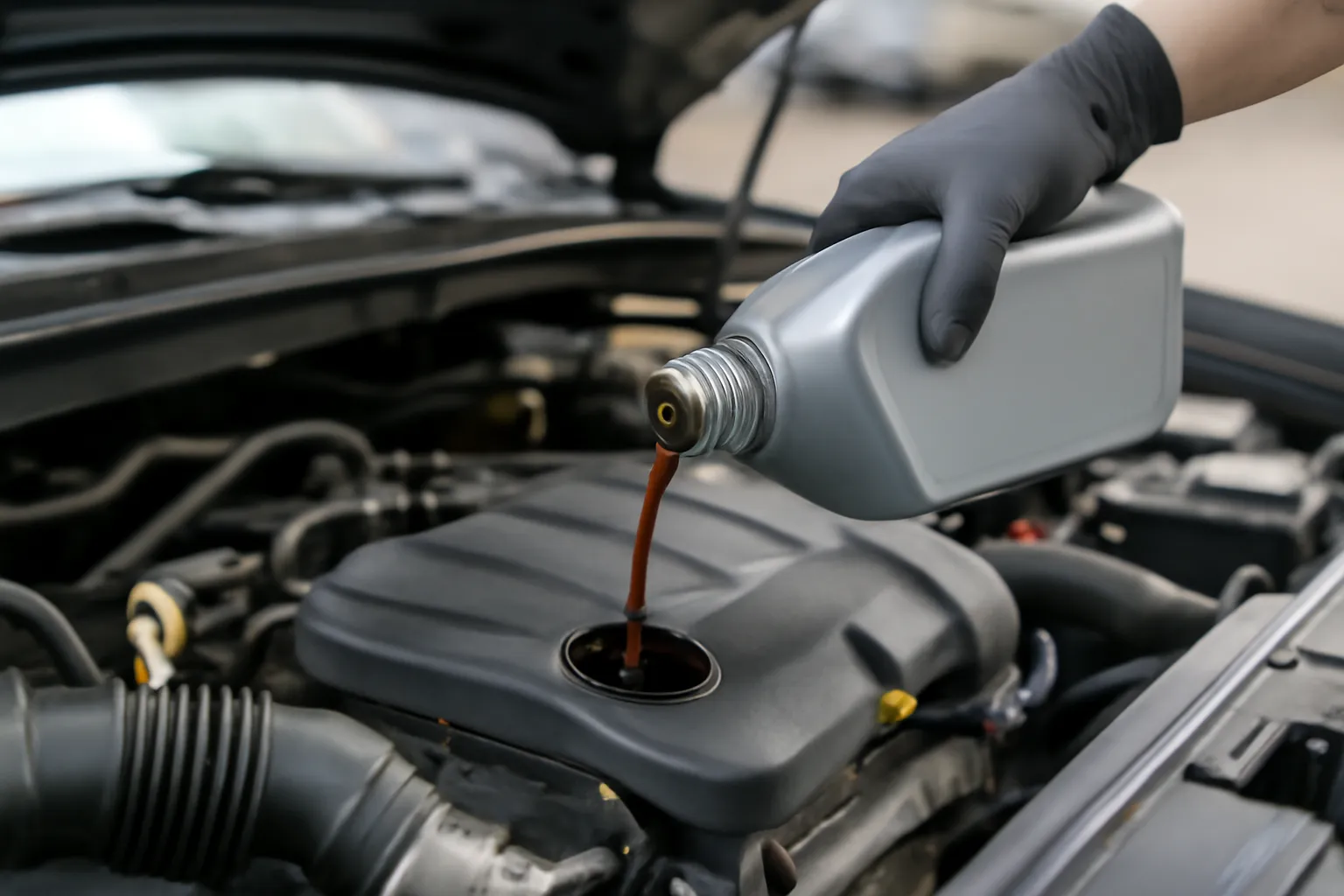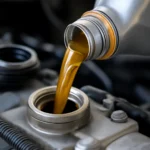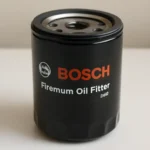A crucial part of vehicle maintenance is changing the engine oil. Engine oil, especially synthetic oil, ensures smooth engine operation, providing necessary lubrication and preventing wear. Over time, oil degrades due to exposure to heat and contaminants. This degradation is why it is essential to know when to change your engine’s synthetic oil. Understanding the synthetic oil exchange cycle is vital to ensuring your engine remains in optimal working condition.
Are you confused about when to change your synthetic engine oil? Learn about the synthetic oil exchange cycle, its timing, and why it matters for your car’s longevity and performance. Discover the best practices for engine oil changes.
Synthetic Oil Exchange Cycle
The synthetic oil exchange cycle is the interval between oil changes that ensures your engine continues to run smoothly. Unlike conventional oils, synthetic oils are engineered to last longer, but they still have a limit to how much they can withstand.
Typically, synthetic oils are designed to last longer than conventional oils. The synthetic oil exchange cycle generally spans between 7,500 and 10,000 miles, depending on the type of synthetic oil and the vehicle’s requirements. For many modern engines, synthetic oil offers improved performance in extreme conditions, like high temperatures, heavy loads, and frequent stop-and-go driving.
Why Is the Synthetic Oil Exchange Cycle Important?
Why is it necessary to change synthetic oil on time? Well, over time, oil can accumulate debris, dirt, and metal shavings from the engine, which can cause friction and wear on the engine parts. Additionally, heat causes the oil to break down, losing its ability to lubricate effectively. If left unchanged, this can lead to engine damage and reduced performance.
Signs that Indicate an Oil Change Is Due
While manufacturers often provide a recommended synthetic oil exchange cycle, it’s important to pay attention to your vehicle’s signs. If your oil level is low, or the oil appears dark and gritty, it’s time for a change. Unusual engine noise, excessive exhaust smoke, or a drop in engine performance can also signal that the oil needs replacing.
For those who frequently drive under harsh conditions, such as towing or driving in extreme temperatures, a shorter oil change cycle may be necessary. Consult your owner’s manual or a mechanic for specific advice regarding your vehicle’s oil change needs.
👉 Learn more about Synthetic Oil Exchange Cycle👈
Synthetic Oil Engine Oil Exchange Time
When it comes to determining the exact time for synthetic oil engine oil exchange, many factors must be considered. Synthetic oils can last longer, but how do you know when it’s time for a replacement?
The synthetic oil engine oil exchange time often depends on how well the oil has been maintained, the type of synthetic oil, and the conditions in which the vehicle operates. On average, for most vehicles, a synthetic oil change is due every 7,500 to 10,000 miles. However, for high-performance vehicles or those used in extreme conditions, the interval might be shorter.
Factors Affecting Engine Oil Exchange Time
-
Driving Conditions: Harsh weather, short trips, and stop-and-go traffic put more strain on engine oil.
-
Oil Type: Fully synthetic oils usually last longer than synthetic blends or conventional oils.
-
Vehicle Type: Luxury or high-performance vehicles often require more frequent oil changes.
Regular monitoring of your vehicle’s performance and oil quality can help you pinpoint the right time to change the oil. Advanced vehicles today often come equipped with an oil monitoring system that alerts the driver when it’s time to change the oil.
Consequences of Not Changing Synthetic Oil in Time
Not following the correct synthetic oil exchange time can lead to oil degradation, resulting in poor lubrication, overheating, and increased engine wear. In the worst-case scenario, failing to change your oil on time can lead to engine failure, leading to costly repairs.
👉 Find out more about Synthetic Engine Oil Exchange Time👈
Synthetic Engine Oil Exchange Cycle
The synthetic engine oil exchange cycle refers to the interval between oil changes for vehicles using synthetic oil. With synthetic oil’s ability to withstand higher temperatures and resist breaking down, the oil exchange cycle is typically longer than for conventional oils. While the standard for many vehicles is 7,500 to 10,000 miles, some high-end synthetic oils can last as long as 15,000 miles.
How Does Synthetic Oil Compare to Conventional Oil?
Synthetic oils are superior in maintaining engine performance due to their engineered properties. They provide better high-temperature stability and lower volatility, meaning they evaporate less and maintain their viscosity longer than conventional oils. This helps the engine stay lubricated, even in extreme conditions.
The Impact of Synthetic Oil on Your Engine’s Longevity
Synthetic engine oils reduce engine wear, provide better fuel efficiency, and help in maintaining peak performance. Engines running on synthetic oils tend to have a longer lifespan because the oil doesn’t degrade as quickly and provides better protection against rust, corrosion, and sludge buildup.
Additionally, modern engines are designed to handle synthetic oils more efficiently, with components made to maximize the oil’s benefits. Over time, this means fewer repairs and less maintenance, saving both time and money.
👉 Learn more about Synthetic Engine Oil Exchange Cycle👈
Conclusion
Understanding the synthetic oil exchange cycle is essential to maintaining the performance and longevity of your vehicle’s engine. Regular oil changes ensure that your engine is always running smoothly, reducing wear and tear, preventing overheating, and improving fuel efficiency. Knowing when to change your oil, based on the type of synthetic oil and your driving habits, can save you both time and money. Always check your vehicle’s manual and keep an eye on oil condition to ensure your car remains in top condition for years to come. As the famous saying goes, “An ounce of prevention is worth a pound of cure.”






